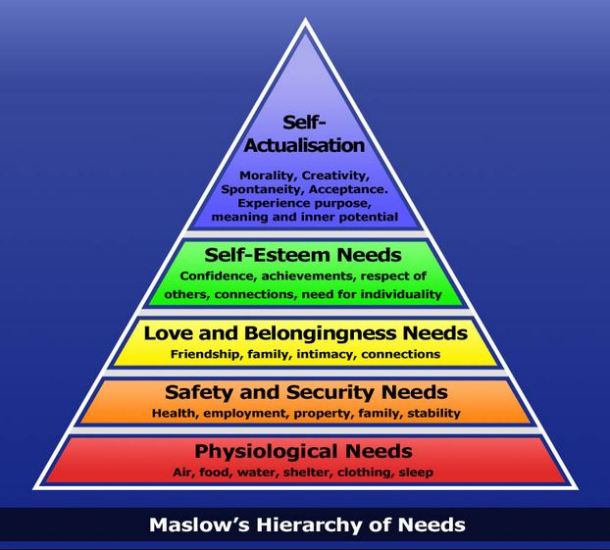I am a great admirer of Father Richard Rohr. Though he and I differ on some points of theology, he has tremendous wisdom and grace to share. So it was this past week, when he published a blog post titled “Loving the Whole Self.” It is part of a series on the Enneagram, and I am so moved by it that I want to share sections of it with you and add my thoughts as well. Here goes.
“The Enneagram’s root sins or passions can be seen as nine different ways of “missing the mark” (hamartia), nine ways of being disconnected from God’s Presence—our essence—here and now. By viewing our Enneagram compulsions as reminders to return to presence, we can become aware of the Divine Presence in us and around us and we can share that love with a hurting world.”
It occurred to me this week that one of the primary reasons that God hates sin (and perhaps, ultimately, the only reason) is that it hurts us, his beloved. And so he calls us to turn away from it (metanoia; repent), remember our belovedness and turn toward him who calls us beloved. The Enneagram is supremely helpful in this ongoing process, as it helps us see our own particular disconnection from God’s presence.
“The Enneagram refuses to eliminate the negative…We only have the courage to face our deep illusions when we are entirely loved and accepted by God…So, with great irony, our faults are the crack that lets grace in, exactly as the Gospel teaches. We must bring our root sin to consciousness rather than deny or repress it. We can only heal our wound with kindness and compassion, not judgment and condemnation. This is how Jesus treated sinners, such as the woman caught in adultery (see John 8:1-11).”
We are raised with this idea that, since God is perfect and cannot look on sin, we must not look on it in ourselves; doing so would be too scary. I love the oft-misinterpreted verse, 1 John 4:18: “Perfect love casts out fear, because fear has to do with punishment.” That second clause is usually left out, but that’s the real key. Once you understand how dearly beloved you are, you are not afraid to look at what is not perfect in you – and you are even able to love yourself entirely in each moment. Yes, we work toward a sin-less life, but we understand that we can only be who we are at any given point in time. And we can have grace for that, in ourselves and then also in others – back to the idea above from Rohr that “we can share that love with a hurting world.” Love makes room for imperfection.
“Teresa of Ávila said that the sinner is actually one who does not love himself or herself enough. We do not see or admire the whole self; so we split and try to love the good self and reject the bad self. But Jesus told us to let the weeds and the wheat grow together until the harvest, lest we destroy the wheat by trying to pull up the weeds (see Matthew 13:24-30). The Enneagram allows us to see and embrace our shadow, the part of us that most carries our shame.”
Yes! If we loved ourselves like God loves us, it wouldn’t occur to us to do anything that hurts us or others. The Enneagram helps us more clearly see the weeds and not be horrified by them; it helps us let go of shame, denial and harsh judgement.
“We all have a little of each personality type in us, allowing us greater understanding and compassion for others. But for our own transformation, we must recognize that we tend to have a primary set of blinders, a primary delusion, a capital sin…Even though this way of perceiving reality doesn’t reflect the True Self, it seems to ‘work’ for us, giving us false energy and purpose.”
That last bit makes me shudder: “giving us false energy and purpose.” I have lived in false purpose for many years, and the reason that I teach and write about the Enneagram is to help others escape that falseness and live out their true destiny.
“It’s sobering to realize that even the best things we’ve done were done for self-serving reasons. But it’s liberating to know that God knew this all along, loves us anyway, and actually used our sins for God’s purposes. As Paul puts it, “Precisely where sin abounds, grace abounds even more” (see Romans 5:20).”
Isn’t that amazing? God knows our journey, and his eternal bigness is able to work in and through our brokenheartedness. (Had to pause to cry for joy while writing this.) So, again, follow God’s model and have kindness for yourself. And for others. Everyone is fighting a hard battle.
“Maintaining this self-image, this false self, becomes more important than anything else. This is where the Enneagram can help us to recognize this game for what it is and to disarm ourselves – to abandon the defense of the false self that we have created. We are letting go of what only seems good and discovering what in us is really good.”
One of my favorite sayings, one which I had on my whiteboard for a long time, is “There is nothing to defend.” Defensiveness exists where the personality, the false self, feels threatened. The Enneagram helps us catch ourselves in the act of defending and opens the possibility of saying no to the personality’s patterned responses. Freedom to be truly who God made us to be – what could be greater, more powerful, more satisfying, more glorifying?
This is the kind of life I am beginning to live out, and I want it for you, too. If you’re ready to begin the journey to your authentic self and the fullness of your destiny, contact me at heath@uncoverydiscovery.com.



